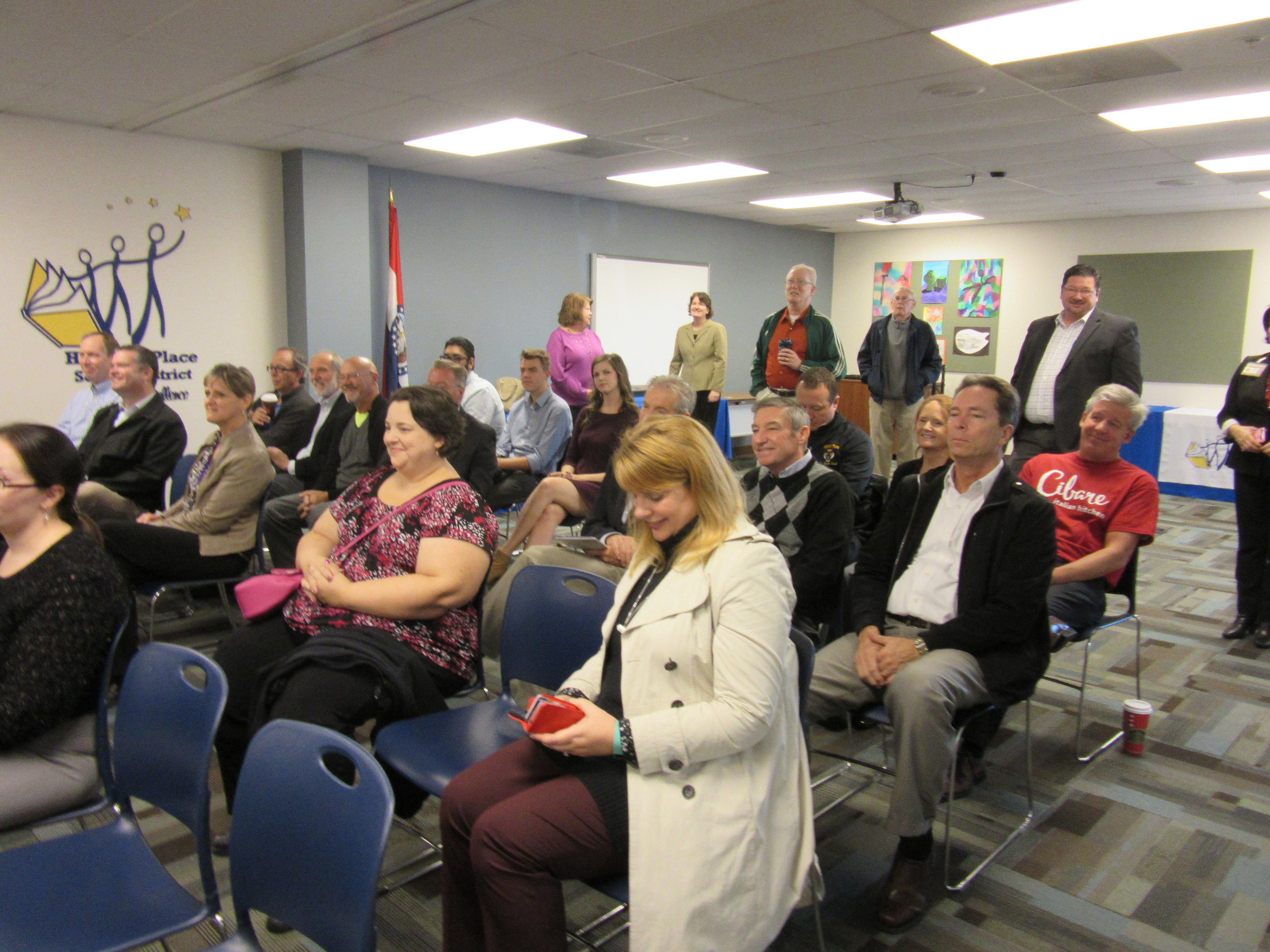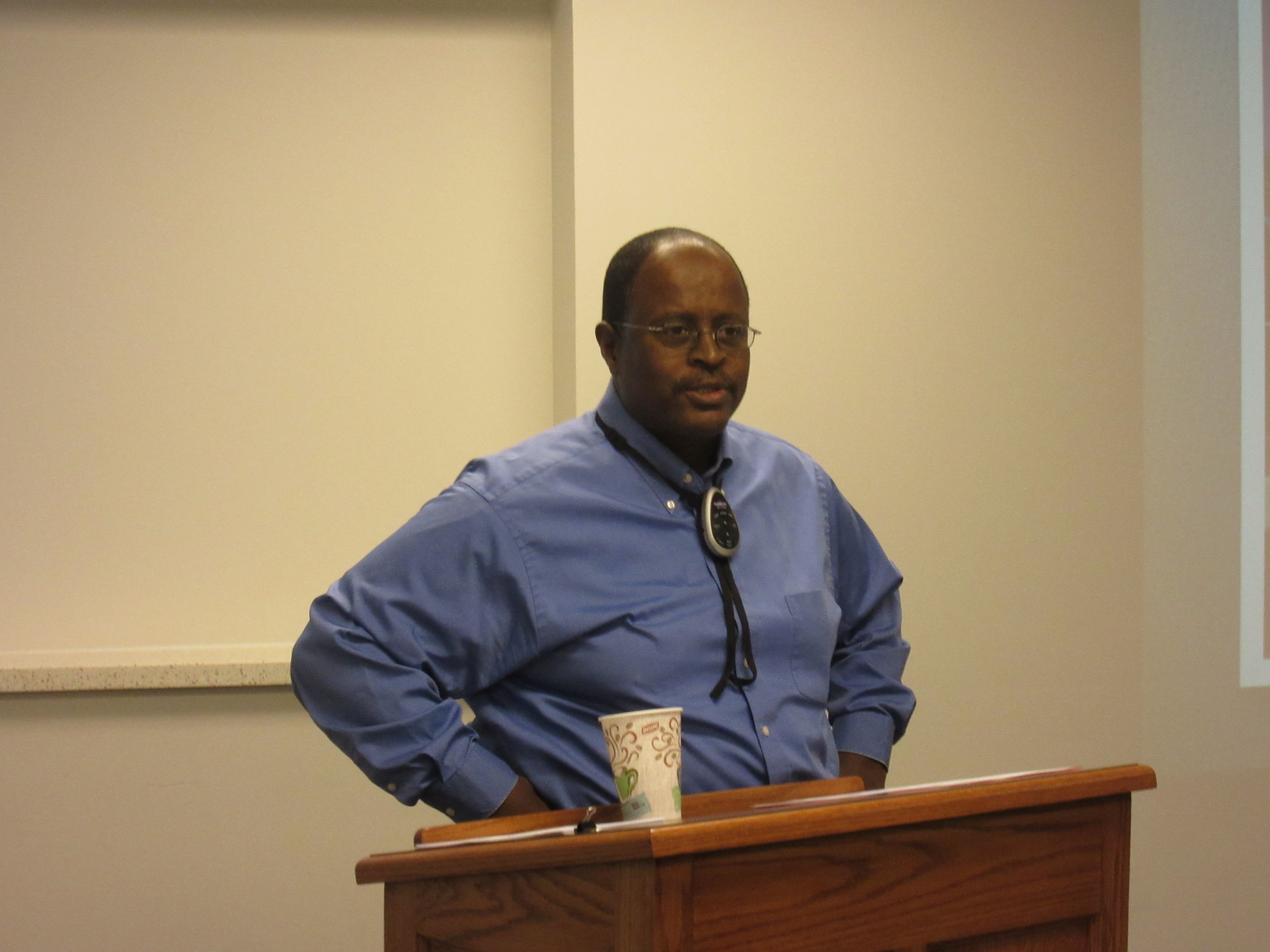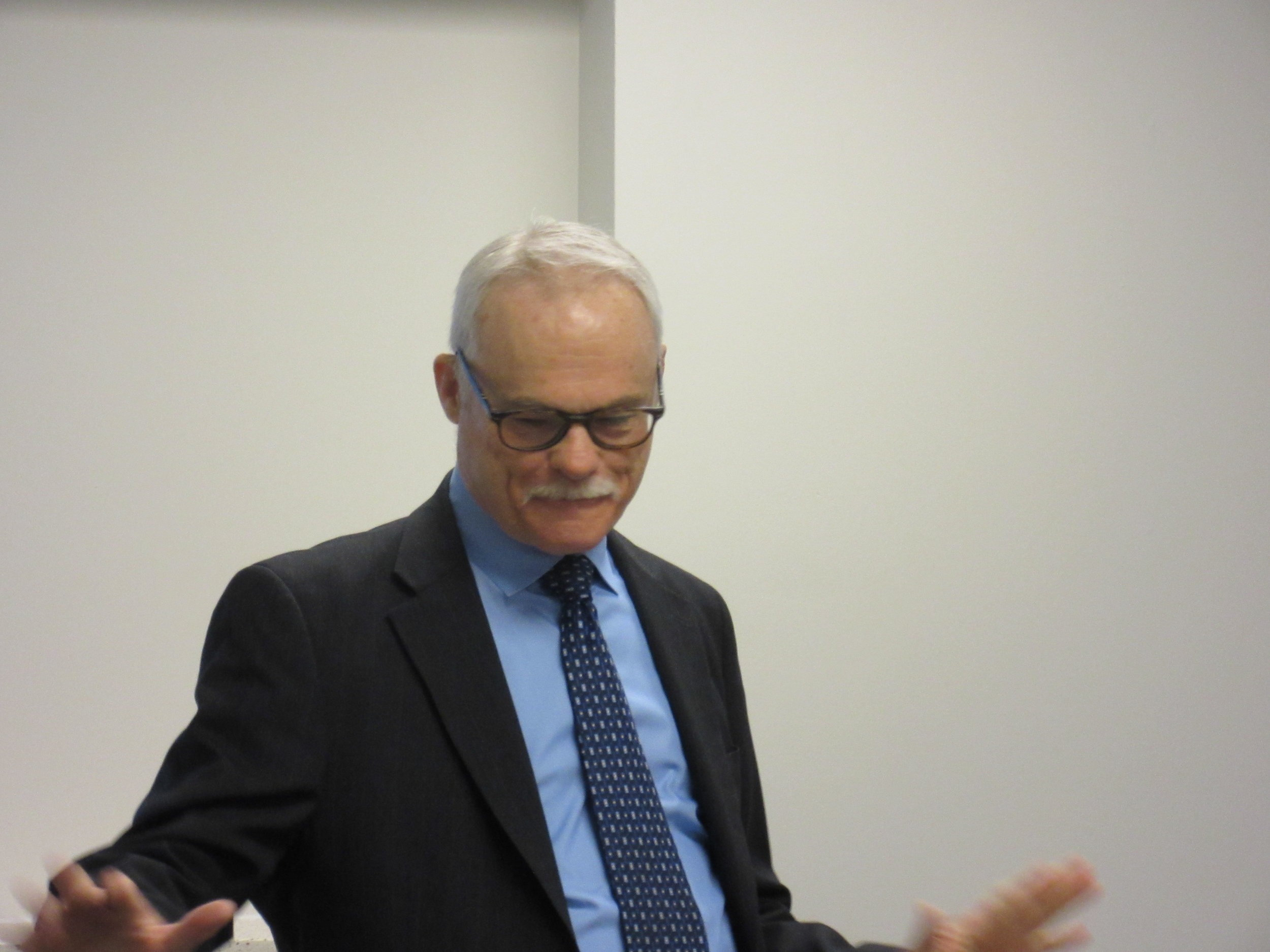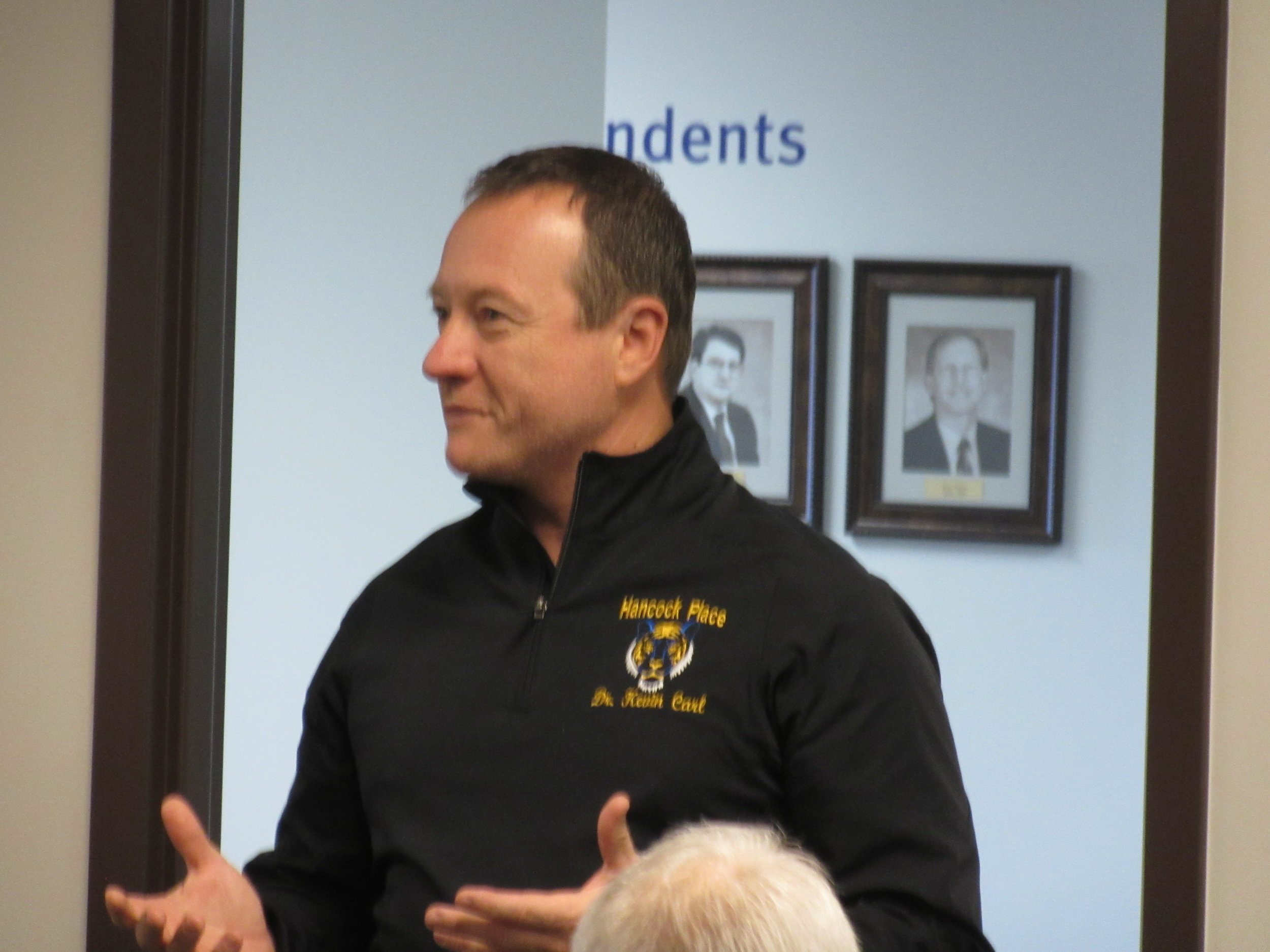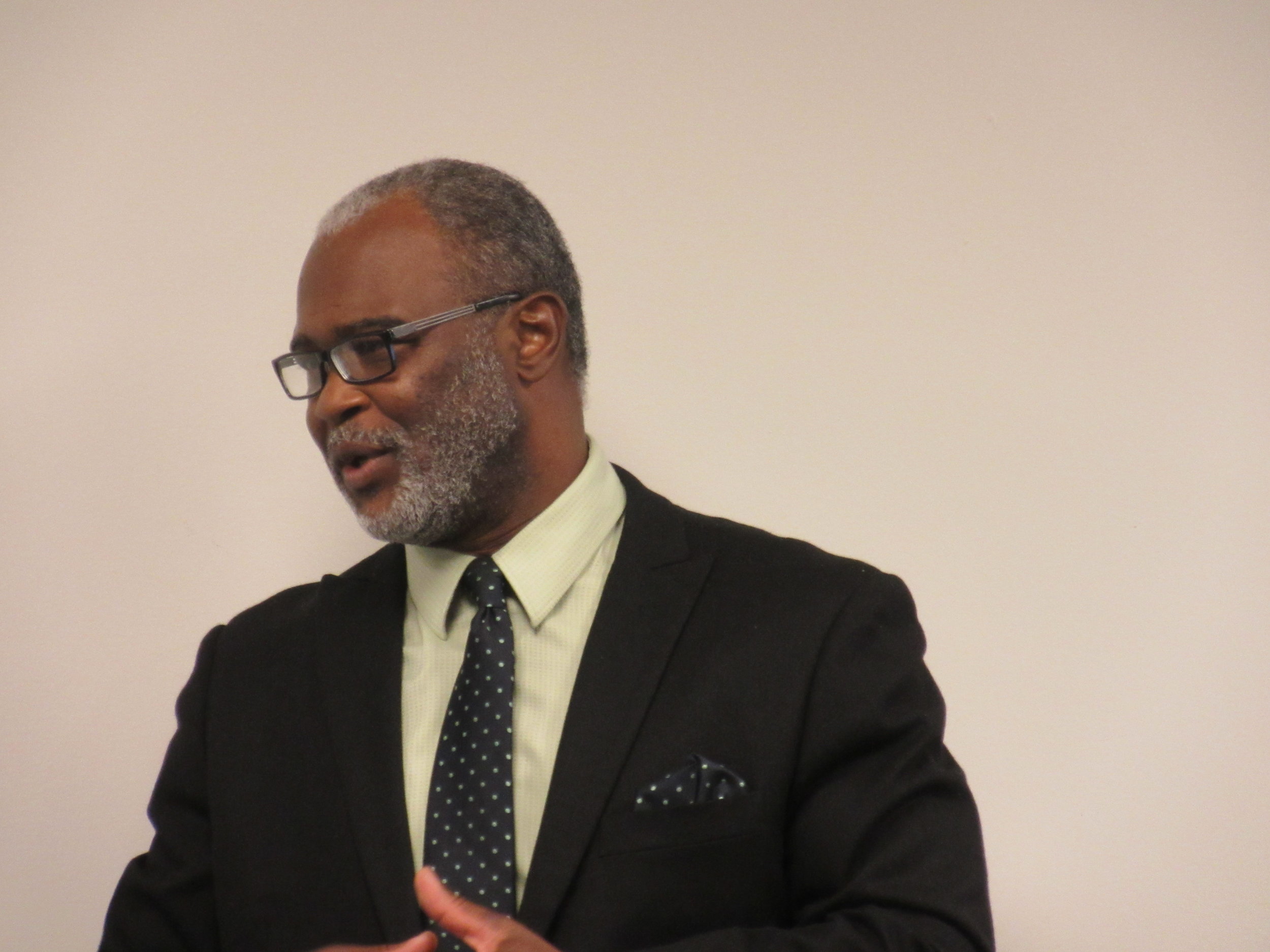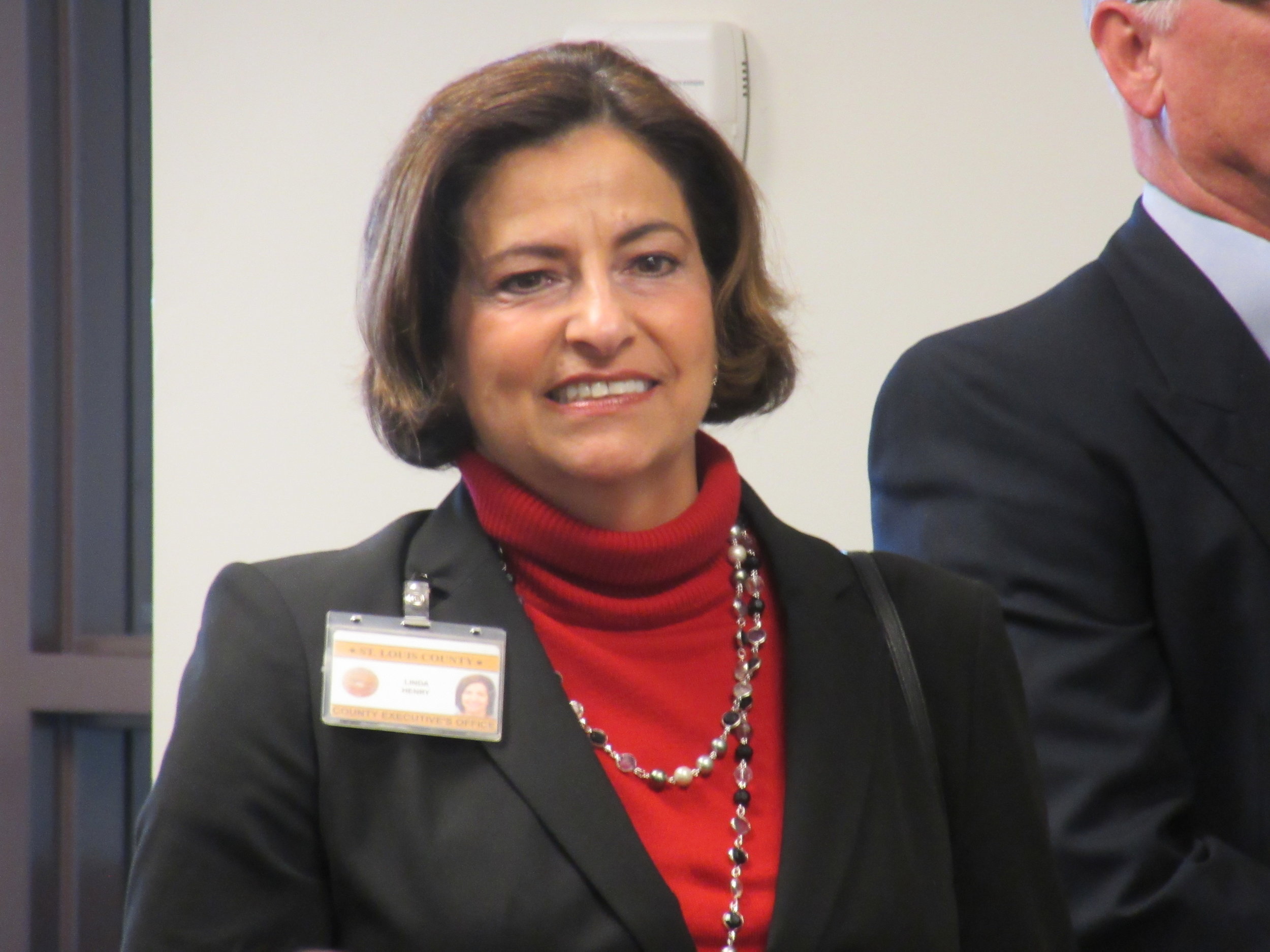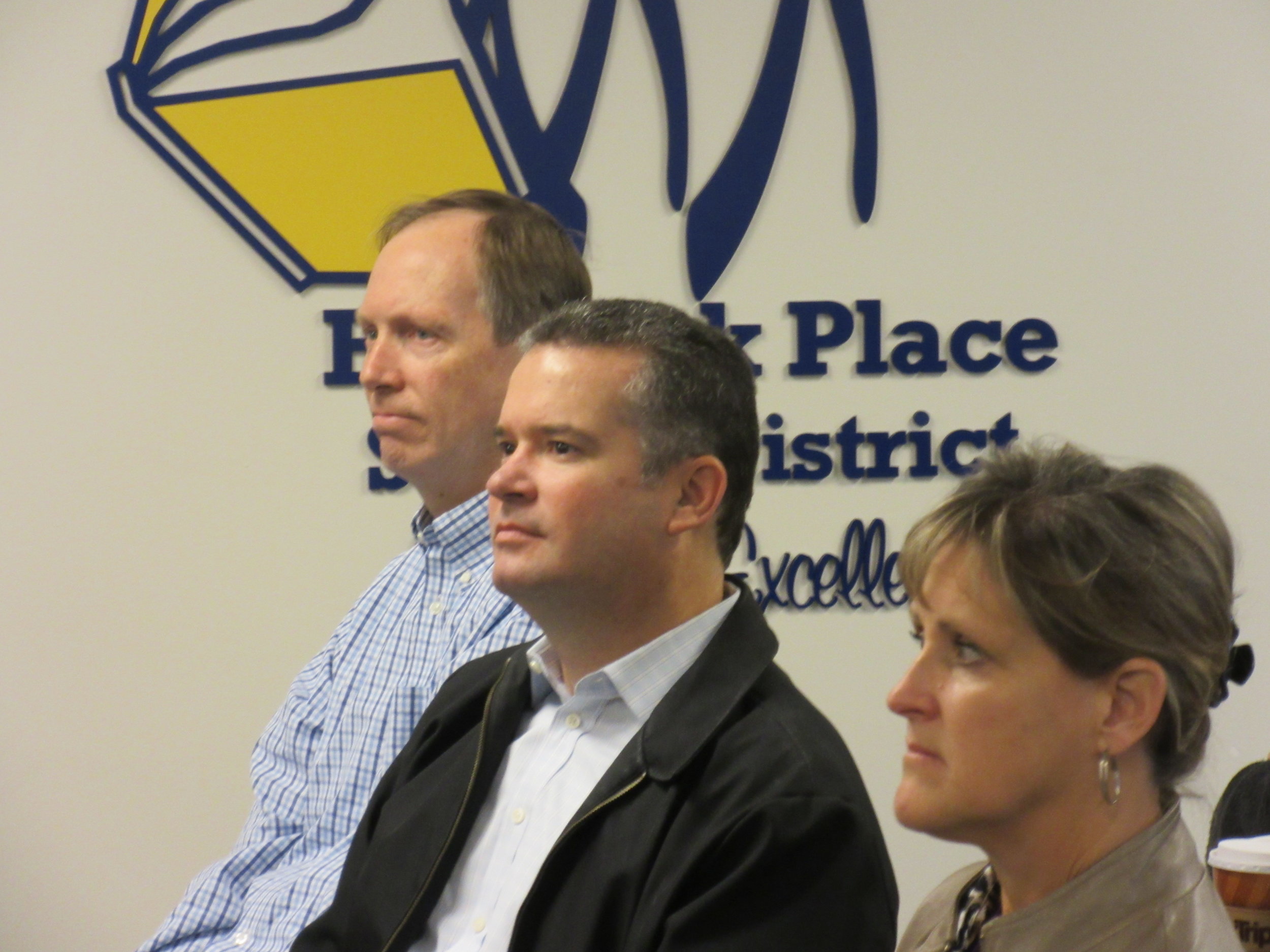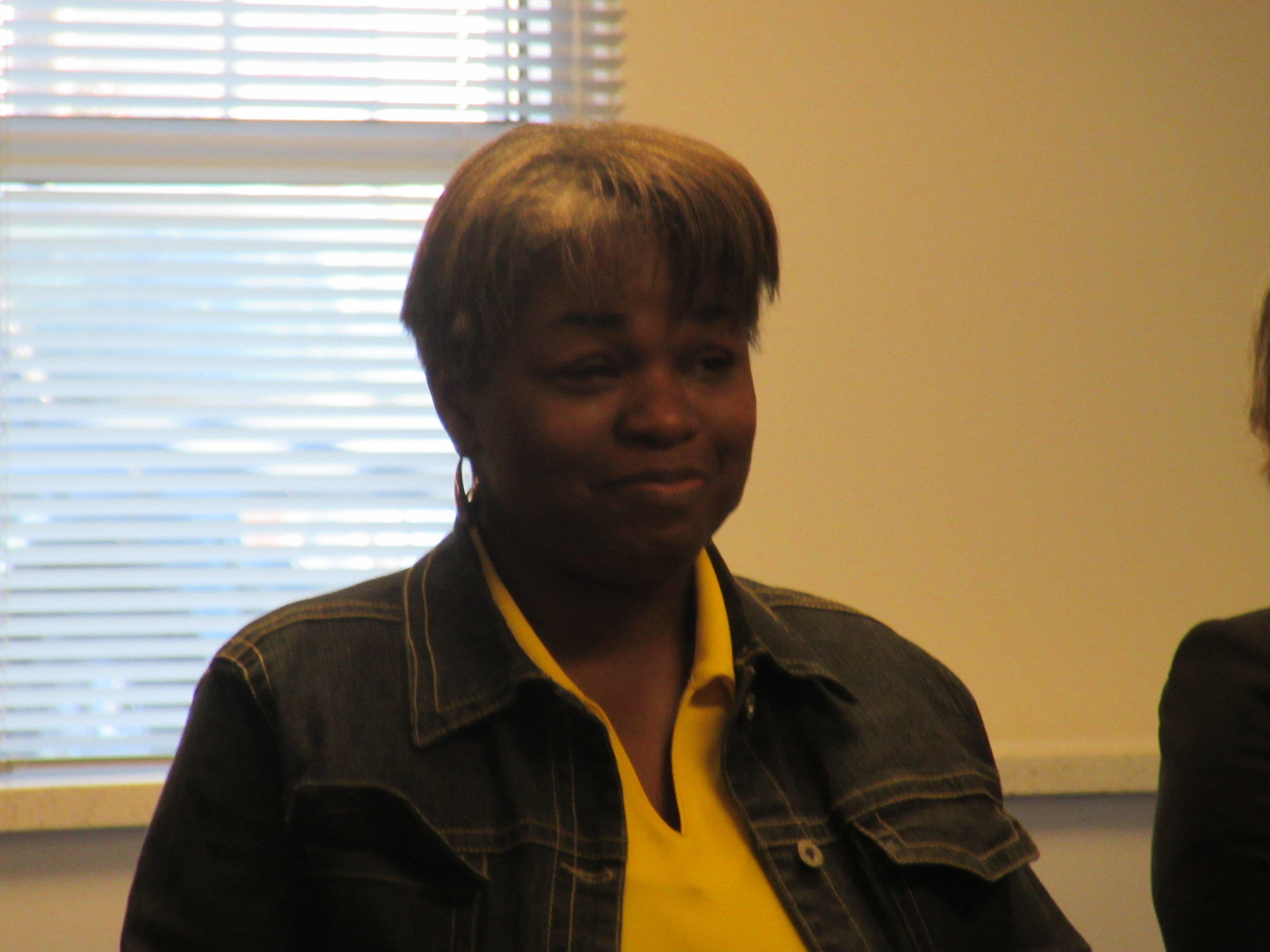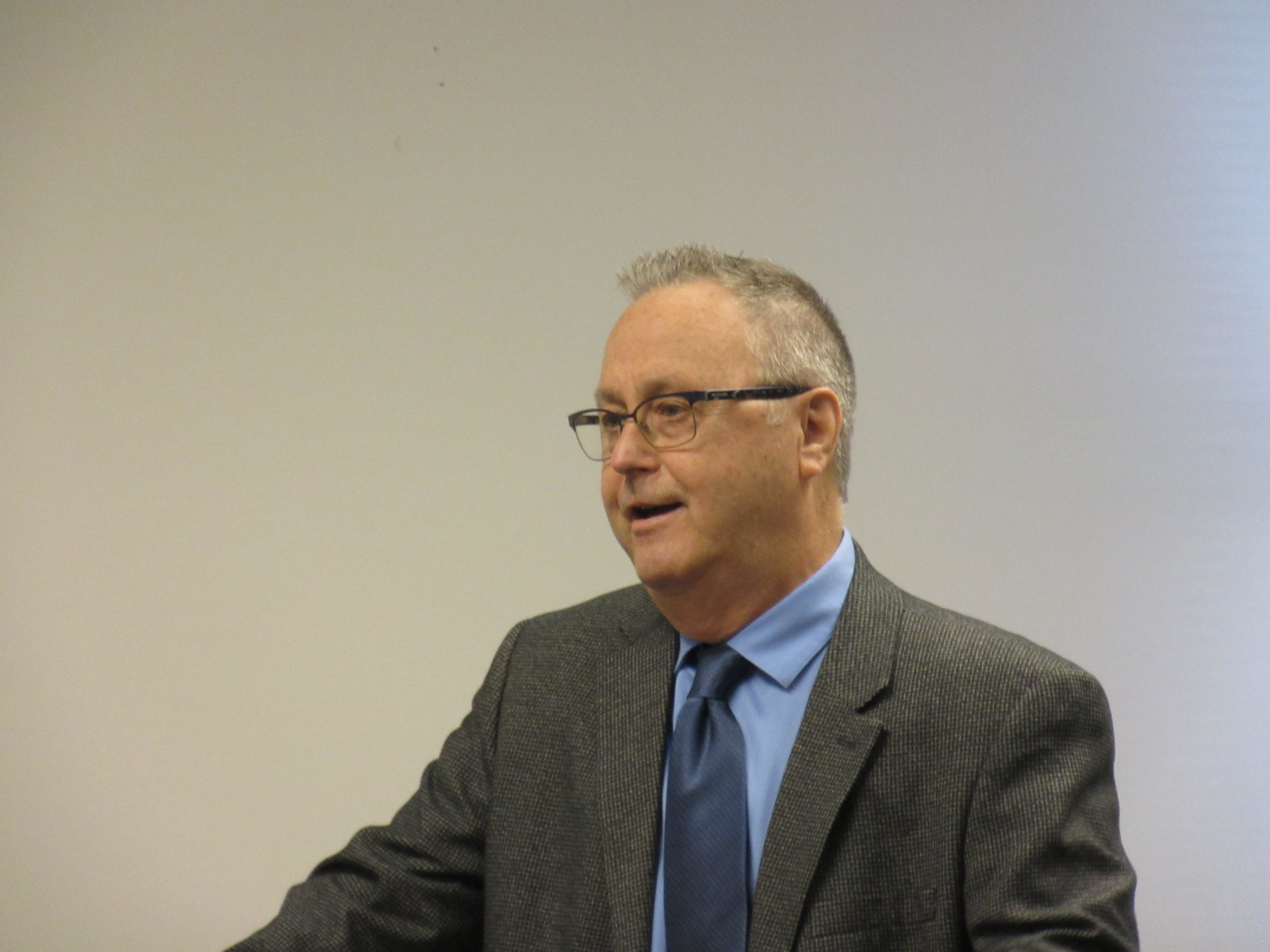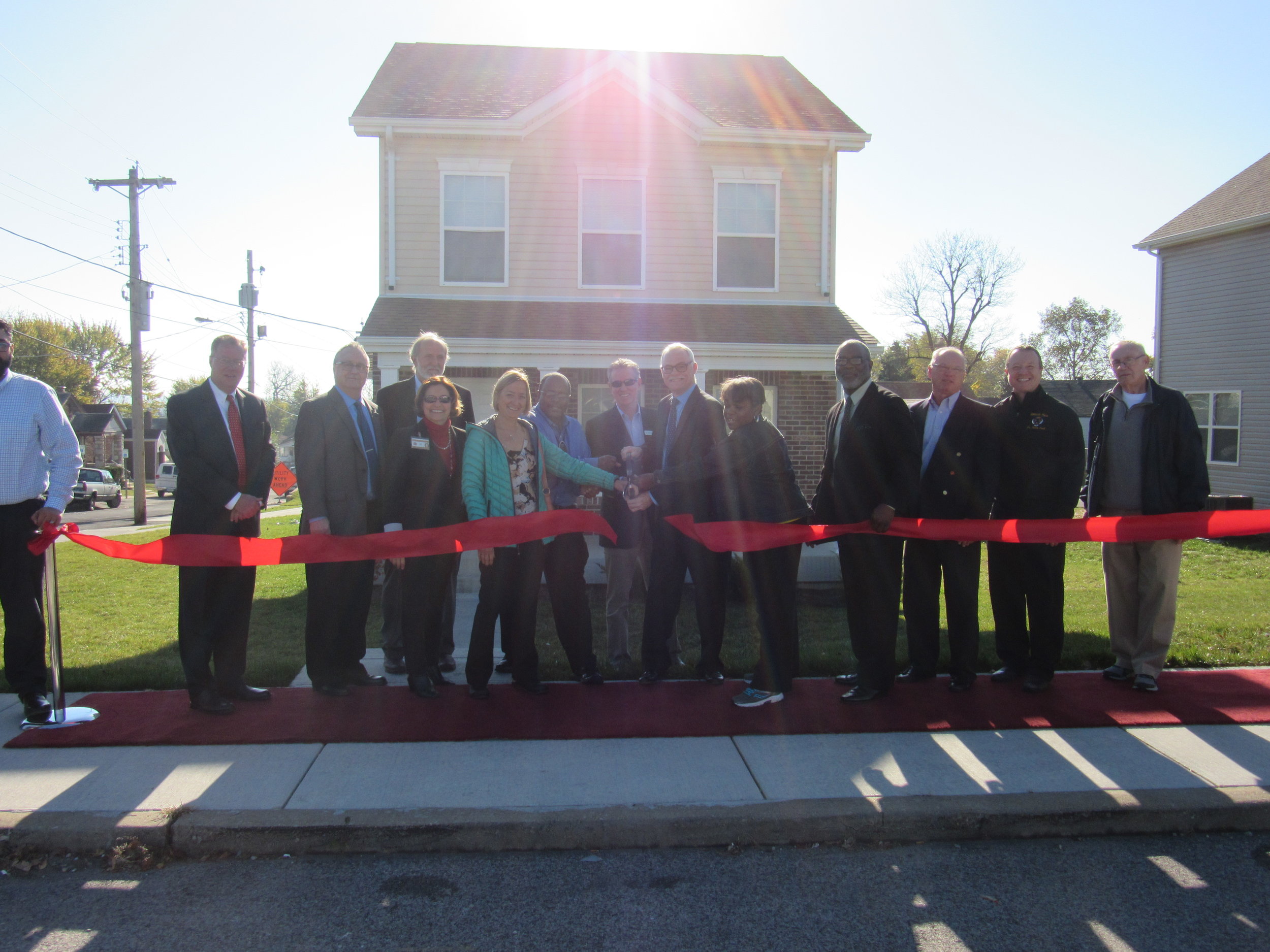Collaboration Continues to Lift the Community of Lemay
Lemay Homes Grand Opening and Ribbon Cutting Ceremony, November 2016
The community of Lemay in South St. Louis County gained 40 brand-new single-family homes this year with the completion of Lemay Homes, a project co-developed by Lemay Housing Partnership, Inc. (LHP) and Rise Community Development (Rise). The lease-purchase homes are affordable to families earning 60 percent or less of the Area Median Income. The units were financed using State and Federal Low-Income Housing Tax Credits and with support from the Missouri Housing Development Commission (MHDC), the St. Louis County Office of Community Development, PNC Bank, and Sugar Creek Capital.
“Lemay Homes is really providing an opportunity for more housing options in this community,” said Reginald Scott, LHP’s Executive Director. “That’s one of LHP’s goals, to create more quality housing options for people who live here and also to encourage folks to move here.”
Reginald Scott, Executive Director of Lemay Housing Partnership, Inc.
Lemay Homes is the latest in a series of efforts to lift the well-being of the Lemay community. After the flood of 1993 wiped out many area homes and part of what was then downtown Lemay, local leaders and residents worked together and developed plans and implementation strategies that eventually led to the formation of LHP in 1998.
For Scott, those foundations speak to the resilient, engaged spirit of Lemay’s residents. “LHP was created via concerned people in the community coming together and working hard to look out for one another,” he said. “They decided that there needed to be an organization in the community that dealt with housing issues. With additional seed funds from the St. Louis County Port Authority, LHP was born.”
Since then, LHP has worked to implement projects and programs that strengthen and support that community. As a certified Community Housing Development Organization (CHDO) and U.S. Housing Department of Housing and Urban Development (HUD)-Certified Housing Counseling Agency, LHP provides homebuyer training and counseling, home repair financial assistance through forgivable loans, and down payment and closing cost assistance as a participant in St. Louis County’s HOME Consortium 1st Home Program.
LHP also executes residential development projects like Lemay Homes. The Lemay Homes development provided a valuable opportunity to tackle blight in the community. During the property acquisition process, the project team targeted derelict and vacant properties that had been causing problems for existing residents, St. Louis County Public Works, and/or the St. Louis County Police. One lot, for example, was the former site of a now-demolished methamphetamine lab.
Standing in the place of those properties now are 40 high-quality, affordable three- and four-bedroom homes. All will remain rental properties for the next 15 years. However, since the project is designed as a lease-purchase program, residents will become eligible to purchase their units at the end of the tax credit compliance period. The longer a resident family remains in their home, the lower their potential home’s effective purchase price at the end of the mandatory lease period.
Until then, residents have the opportunity to prepare for homeownership with help from LHP. That includes coaching as well as a gradual transfer of homeownership responsibilities, which started this year with participation in lawn care upkeep. “They will learn to be homeowners,” Scott explained. “A lot of the units came online over the summer, and we gave them hoses and sprinklers so they could water the sod and seed. And each year we hope to pass on more responsibilities, so at the end of the day they can function comfortably and confidently.”
Scott cites this capacity to provide comfort and security as one of Lemay Homes’ biggest strengths. “For some of the new residents, it’s been amazing to see the impact on them and their family living in a brand-new, single-family home. It can have a huge impact on your self-esteem,” he said. “What’s occurred in other lease-purchase projects similar to this one is that people really take ownership and pride in a brand-new home with new appliances and modern features. So we hope that the new home will be a motivator and stabilizer for the new residents and that its affordable price will create and sustain an improved quality of life for all the families.”
The positive impact of Lemay Homes has also carried over to the community at-large. Expanded housing options and improved housing stock mean higher home values for area residents, and the new construction projects have drawn noticeable responses from neighbors who have been inspired to complete their own home improvements. “Once we started doing development work of scale, we saw a lot of folks come out and start to invest,” Scott said. “A lot of fix-up, painting, new windows, et cetera.”
LHP’s home repair program makes that home repair work more economically viable for Lemay residents. “We’re trying to reinforce and provide services to existing homeowners so that they don’t feel like they can’t improve their conditions as well,” Scott explained. “Maybe they’re not able to purchase or rent one of the new homes because of the pricing or demand, but they can make improvements and critical repairs. We are assisting them with making sure that their homes are safe and healthy.”
Dr. Kevin Carl, Superintendent of Schools, Hancock Place School District
The Lemay Homes development has added families to the Lemay community, too. All but a few residents are new to the area, and most have children who are now students in Lemay’s Hancock Place School District (HPSD), where local resident enrollment increased this year for the first time in ten years.
For a school district doing all it can to be an active partner and community asset in Lemay, that shift was a big win. Dr. Kevin Carl, HPSD’s Superintendent of Schools, believes this commitment is critical to the area’s well-being. “Here’s the reality,” he said. “I don’t care where you live, but if you’re in Missouri, because we’re not an open enrollment state, one of the questions you’re going to ask when you move somewhere, even if you don’t have kids, is ‘What school district is this?’”
That’s why HPSD provides top-notch technology and teaching resources to students and wraparound services to area families, including a free health clinic that’s open to all residents of the 63125 zip code. It’s also why Dr. Carl spends so much time seeking out ways to collaborate with other community organizations. “In the end, we all want the same positive outcome in the community,” he said. So when leaders and residents come together, the question they often consider is, “How do we think we can best facilitate that?”
Rise, too, has been a key partner in these long-term efforts to engage and revitalize the Lemay community. Rise provided a portion of the start-up capital for local news and outreach through the Community Link, a local quarterly newspaper that’s managed by LHP, HPSD, Lemay Development Corporation, and the Lemay Chamber of Commerce. In 2014, LHP broke ground on its first relatively large residential development project, Smith Place at Linn, which featured ten new affordable for-sale homes. Rise provided some predevelopment funding and helped secure a Priority Markets Grant from Wells-Fargo to cover part of the project’s cost. Midwest Bank Centre, the St. Louis County Office of Community Development, and the St. Louis County Port Authority also supplied financing. The homes sold quickly once they were completed, and in 2015, Smith Place at Linn earned LHP a Better Neighborhoods Award from DeSales Community Housing Corporation.
Both Smith Place and Lemay Homes have been outgrowths of the Lemay Comprehensive Plan, adopted by St. Louis County in 2006. The Plan was developed by the County Council and Lemay stakeholders to identify community needs and strategies for improvements. Using the comprehensive plan, LHP worked with local residents and stakeholders to develop the East of Broadway Neighborhood Plan. Smith Place was the initial project implemented as a result of the neighborhood plan. Next in line could be a series of economic development projects along South Broadway, which will likely focus on local services prioritized by Lemay neighbors at a recent charrette. “I give this community credit—they do show up and are engaged in the planning,” Scott said. Residents said they’d like to see coffee and ice cream shops, cafes, and other small, community-oriented businesses within walking distance. Development work might also feature service providers that offer workforce training, financial services and counseling, health services, or office space for local professionals.
These possibilities and completed projects have lifted the collective spirit of Lemay residents, many of whom have faced uncertainty about the area’s future in years past. The community has been hit with foreclosures and tax delinquencies, previous development plans included speculation about a potential industrial park, and some residents worried that an expansion of River City Casino might capture vacant land for parking. The result, Scott said, was that “people held off on really making significant equity investments in their property.”
Larry Perlmutter, Communications and Development Manager, Rise Community Development
Thanks to committed community partners like LHP, Rise, and HPSD, that’s no longer the case. Larry Perlmutter, Rise’s Communications and Development Manager, links their shared work in Lemay to powerful ripple effects. “Anytime you can create a development that not only improves the appearance of the community, but that contributes to the overall community’s quality of life, it’s a good thing,” he said. “When you bring in more tax revenue, when you bring in more students to the school system, when you create work in the community—all of those things are good.”
Dr. Carl agrees. He encourages community-building organizations and partnerships to “think big”: “Don’t underestimate the ability of your community to do things that they’ve not seen before, or to think about things they haven’t otherwise thought of,” he said. “Foundationally, you need to make sure you’ve got the right people in the right places. That’s number one. And then, don’t limit yourself. Include everybody in that conversation.”
That inclusive, cooperative framework is important to LHP, too. “The coolest thing about doing this work is that we are trying to constantly stay engaged with the local residents, institutions, and businesses to make sure that LHP’s work reflects programming and projects consistent with the real needs in the community. That’s important,” Scott emphasized. “You have to really work to create a game plan, and make sure you have shared ownership of the plan with the stakeholders in the community.”
As far as that plan is concerned, LHP remains committed to celebrating the community’s achievements along the way as it continues to explore next steps. “We’re one of many folks out here trying to figure it out,” Scott said. “And collectively we’ll get there sooner rather than later.”
Click here to watch a video of testimonials from LHP stakeholders and community members who have been touched by the organization’s work. Below are photos from November’s Lemay Homes Grand Opening and Ribbon Cutting Ceremony, courtesy of Rise.
Written by Jenny Connelly-Bowen, CBN Graduate Research Assistant




